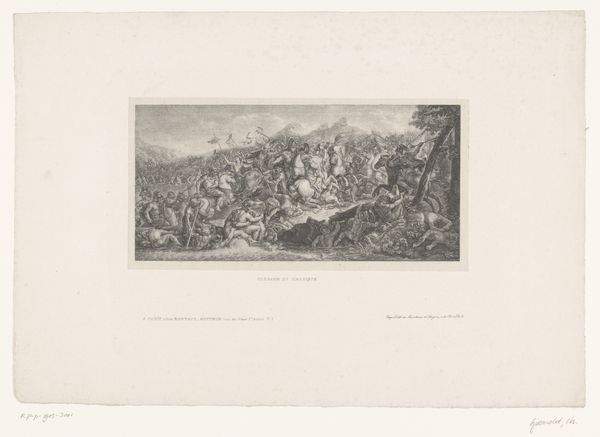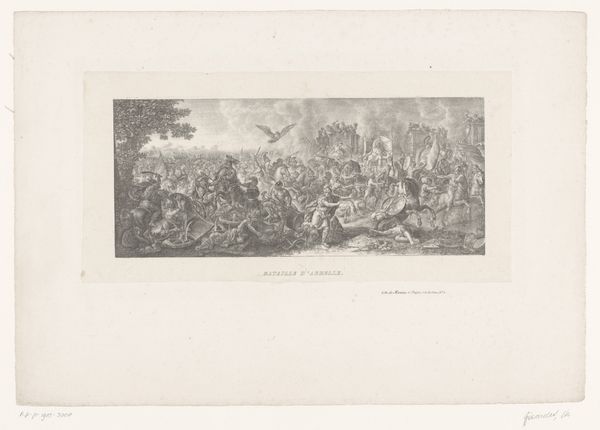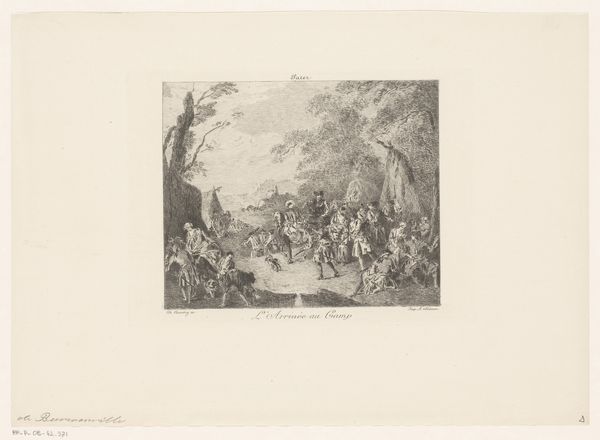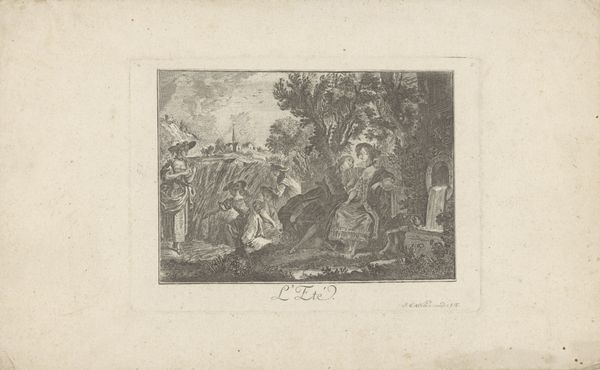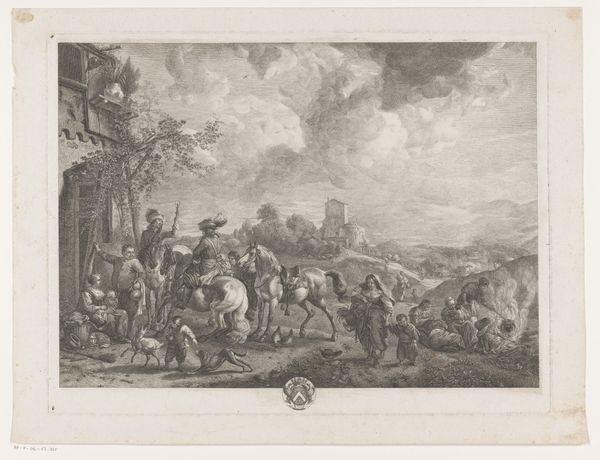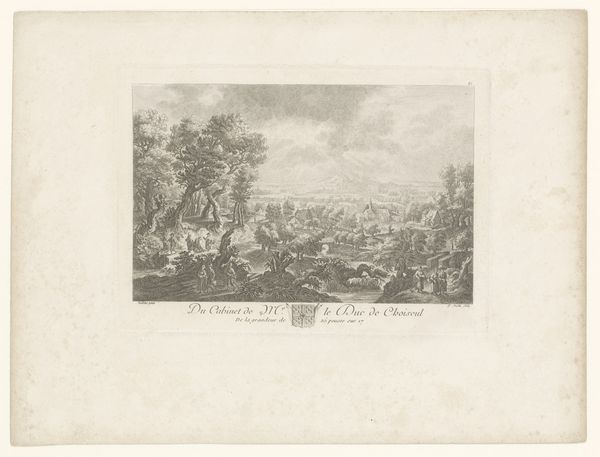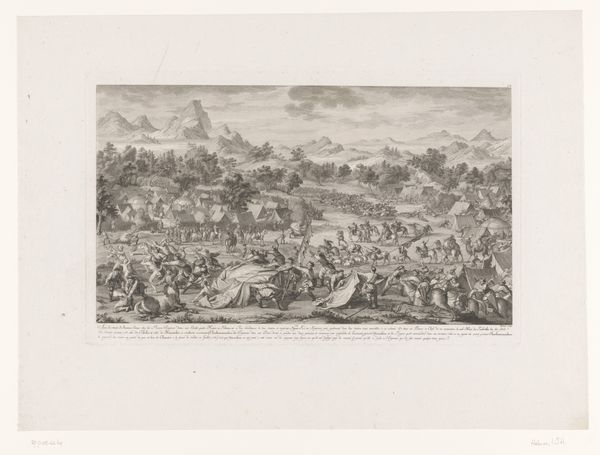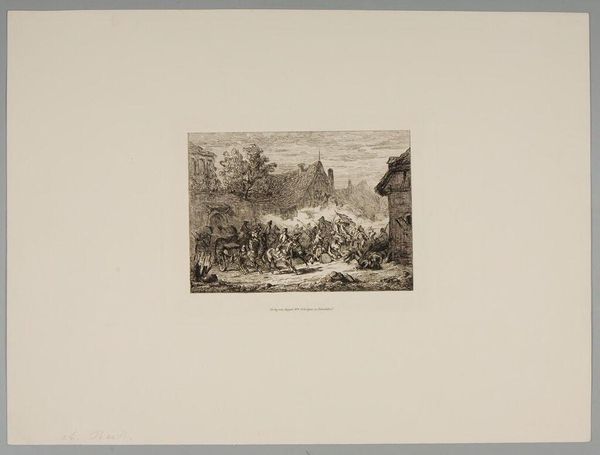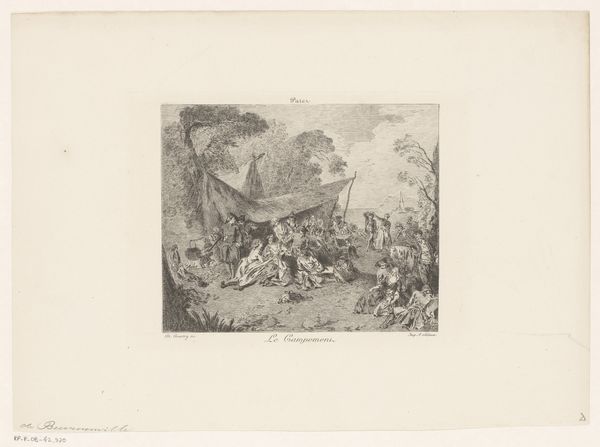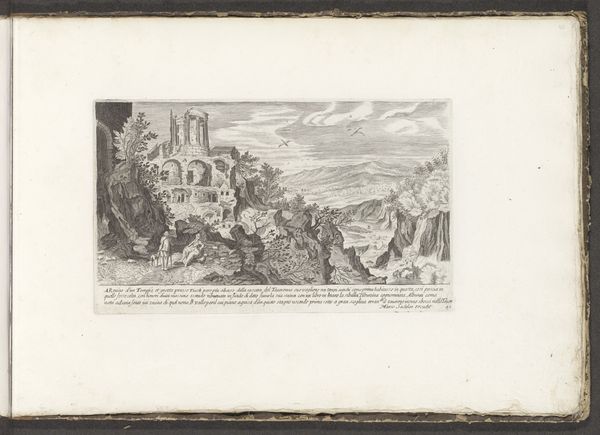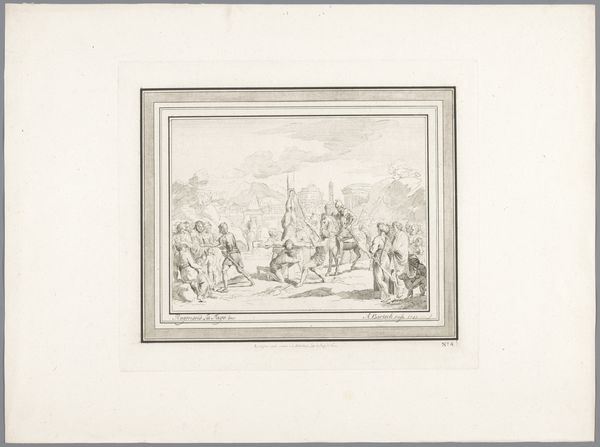
print, engraving
#
narrative-art
# print
#
old engraving style
#
landscape
#
classical-realism
#
figuration
#
romanticism
#
chiaroscuro
#
line
#
history-painting
#
academic-art
#
engraving
Dimensions: height 286 mm, width 411 mm
Copyright: Rijks Museum: Open Domain
Editor: This is "King Porus Before Alexander the Great," a print made around 1837 by Charles Girardet. It has a classical, almost idealized aesthetic but the medium—print—somehow subverts its presumed high art status. What strikes you most about it? Curator: Immediately, I'm drawn to the physical labor involved in creating an engraving like this. Think about the repetitive, meticulous work with a burin on a metal plate required to create the range of tones and textures. Editor: That’s really interesting; I never considered the physical intensity involved. How did the means of print production influence consumption during that era? Curator: The rise of printmaking democratized imagery. Reproductions like this brought scenes of historical grandeur, previously confined to aristocratic collections, to a wider audience. What kind of labor did *receiving* an artwork demand in those times, and what does it demand now? Editor: Well, this was long before we could summon anything we wanted with our fingertips…it involved significantly more travel and commitment to view. Did printmaking like this also help consolidate an idea of national identity through visual propaganda? Curator: Absolutely. Reproductions served to propagate dominant narratives, in this case likely a valorization of conquest. The act of consumption then wasn’t passive but reinforced existing social hierarchies and moral frameworks through labor. This engraving also appropriates visual references to other art. How might understanding these source images alter the perception and the value of this print? Editor: Hmm, it’s interesting to consider what materials, production methods, and intended audiences are considered "high" or "low" art across history. Thanks for providing new lenses to look at this through! Curator: Indeed. Examining the means of production pushes us to question established artistic value systems, even today.
Comments
No comments
Be the first to comment and join the conversation on the ultimate creative platform.
